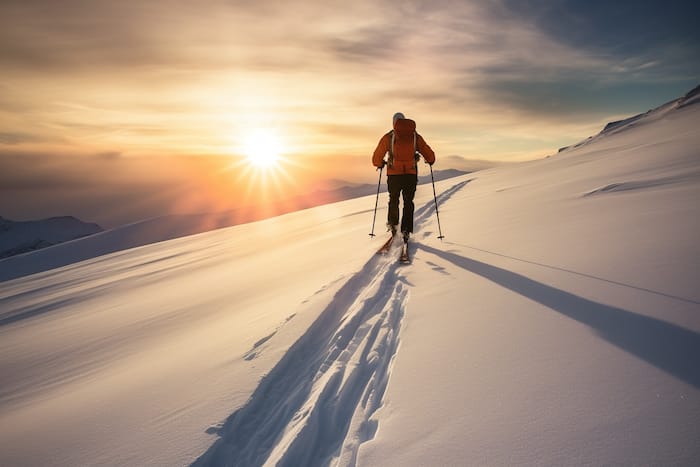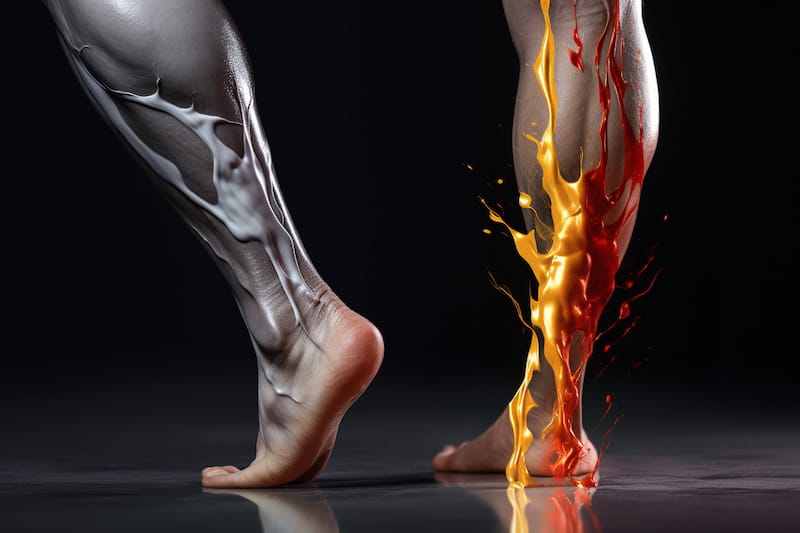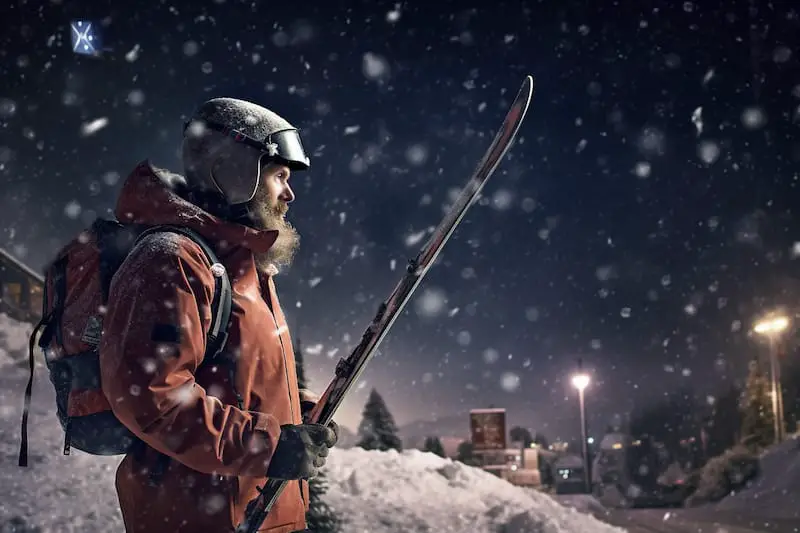When it comes to cross country skiing, many people enjoy the hard work of gliding across the snow while enjoying the sights and sounds of the mountains around them. Whether you enjoy the casual skiing experience or want the high-intensity workout experience, cross-country skiing may be a sport you want to try.
Although most experts say you do not need a helmet for cross country skiing, you may want to consider one for safety purposes. This is because while cross country skiing does not involve a lot of downhill skiing, you will still be traversing many small hills and slopes.
To learn whether you need to wear a helmet when you are cross-country skiing, you will need to know what the sport entails and what equipment is suggested by the professionals. Keep reading to discover what cross country skiing is and what equipment you may need if you plan to go.
Why Might You Need a Helmet for Cross Country Skiing?
Cross-country skiing involves roaming across the countryside on skis using specific skills and techniques. Most people enjoy the hard work that is entailed with the sport because it gives them a different type of experience than downhill skiing provides. Whether you enjoy a challenge or just want a new experience, cross-country skiing can be fun.
Unlike downhill skiing, cross-country skiing involves using movement and momentum to move across the snow. The sport may require some level of fitness ability; however, many novices enjoy learning. Whether you are a beginner and enjoy the shuffle across the snow or an expert who glides smoothly, cross-country skiing can be an enjoyable experience.
One of the most common types of cross-country skiing is the classic form. This involves the traditional diagonal strides on skis across the terrain. Most people learn the classic technique before moving on to the more advanced levels.
Another type of cross-country skiing is the skate form, which is considered a more advanced level. This form looks more like ice skating as it requires you to move in the same methods. Many people who enjoy a more intense challenge tend to like the skating method as they can move at higher speeds and get a more overall workout.
Can you use backcountry skis for cross country skiing?
Do You Need a Helmet for Cross Country Skiing?
While most people say that a helmet is not necessary for cross country skiing, many others say you should wear one during any kind of skiing. This is because safety is the most vital component of many winter sports.
Wearing a helmet can protect you from any accidents that may occur while you are on the slopes. Although cross-country skiing does not happen on downhill slopes where you would need the added level of protection, you will still be traversing hills and slopes.
What Clothing Do You Need for Cross Country Skiing?
While cross-country skiing requires much of the equipment that downhill skiing may, there are some differences between the two. While downhill skiing requires more layers of protection to battle the conditions, cross-country skiing may not need as much.
Due to the hard work required to cross-country ski, heavy layers of clothing are not recommended. This is because you will end up in a sweaty mess by the end of your skiing session.
Many people suggest that starting with light layers is the best way to keep your body warm and allow you to wear fewer heavier layers. Wearing a tight tank top with a tighter long-sleeved shirt is the core layer recommendation.
While you may get cold if you were standing out in the snow, while cross-country skiing, your body is constantly moving from head to toe, because of this, a light jacket that has some moisture and wind resistance is best for you.
To keep the bottom of your body warm during cross-country skiing, you will want to have a couple of light layers. Long underwear and either cross-country ski pants or even leggings will allow you to move with ease and stay warm at the same time.
With a few final accessories such as a hat, headband, gloves, and a scarf or other neck covering, you will be ready to hit the trails. Many people also suggest having a pair of goggles to keep certain elements out of your eyes.
What Other Equipment Do You Need For Cross-Country Skiing?
For the most part, cross-country skiing typically only requires lightweight equipment. This is because the sport itself is much like walking or running. Because of this, the equipment needed can be fairly inexpensive.
Most people who cross-country ski wear a low-cut boot more frequently than the traditional ski boots. The reason for this is that since the sport is more like running or walking, a low-cut boot can give you the comfort needed while traveling across the snow. This type of boot provides you with the right amount of support as well.
The most important equipment you will need for cross-country skiing is the skis. Typically, having a set of skinny skis works best for this type of terrain. This is because they allow skiers to go uphill when needed. Many of the skis come with some type of tread on the bottom to allow for more traction.
Finally, the poles used during cross-country skiing are typically taller than downhill skis. These poles usually come up to the height of the underarm to give you the extra layer of support needed, especially when traveling uphill.
As with any type of sport, it is always better to be safe than sorry. This is especially true for sports that involve skis. Since cross-country skiing consists of you traveling across slippery terrain for an extended period of time, wearing a helmet can keep you protected from any accident that may occur.
Overall, when deciding whether you want to go cross-country skiing or not, you will need to consider everything that it entails. This includes any lessons you may need and the equipment that is required to help you to have the best experience.


